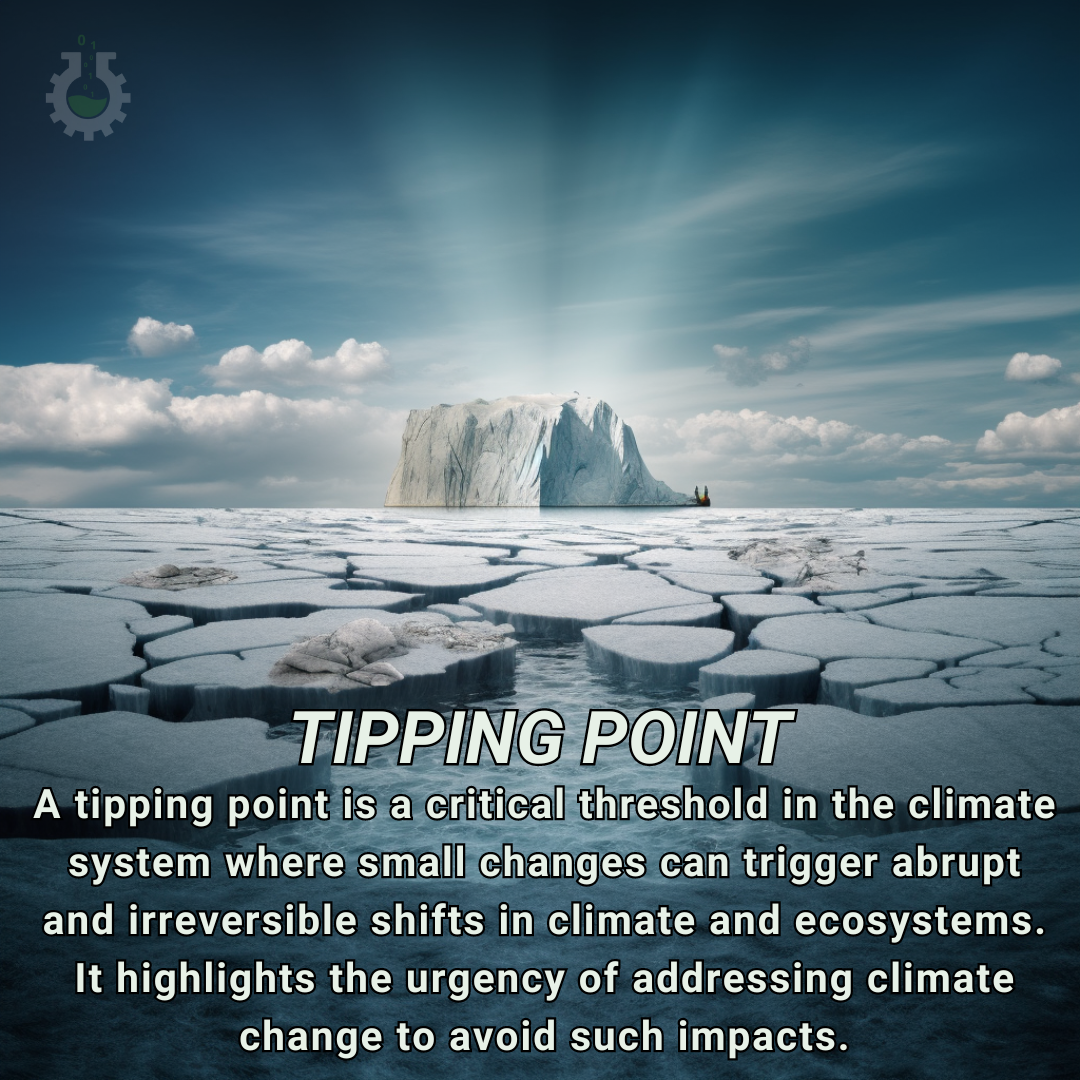April 3, 2024
Climate Change Poster Collection of the Day – Tipping Point
Book a Demo
Today’s Climate Change Poster Collection highlights Tipping Point. In the context of climate discussions, the term “tipping point” holds significant weight as it represents a critical juncture where relatively minor changes can trigger drastic and potentially irreversible alterations in our environment and climate systems. A tipping point is characterized by a moment in which a system experiences a shift from one stable state to another, often as a result of self-reinforcing processes known as feedback loops. These loops can amplify the effects of small perturbations, leading to a cascade of changes that push the system into a fundamentally altered state that is difficult, if not impossible, to revert.
One of the most alarming examples of such tipping points in the Earth’s climate system is the potential for rapid ice loss from the Greenland and West Antarctic ice sheets. If warming continues unchecked, these ice sheets could cross a threshold beyond which ice loss becomes self-accelerating, leading to a dramatic rise in sea levels and posing a dire threat to coastal communities worldwide. Similarly, the thawing of permafrost is another tipping point of concern. As the permafrost melts, it releases methane, a greenhouse gas far more potent than carbon dioxide, which could further exacerbate global warming and lead to more permafrost degradation in a vicious cycle.
The Amazon rainforest, often referred to as the Earth’s lungs, is also on the brink of a tipping point. Deforestation and prolonged droughts, fueled by human activities, threaten to transform the lush rainforest into a drier savanna, which would not only result in an immense loss of biodiversity but also diminish the forest’s capacity to absorb carbon dioxide from the atmosphere. Additionally, the stability of crucial ocean currents, such as the Atlantic Meridional Overturning Circulation, is at risk. Freshwater influx from melting ice could weaken or even halt these currents, with far-reaching implications for weather patterns and climate stability across the globe.
The relationship between tipping points and climate change is one of interdependence, with the progression of human-induced climate change pushing various Earth systems closer to their tipping points. Crossing these critical thresholds could lead to a self-perpetuating cycle of climate change, making it increasingly challenging to implement effective mitigation and adaptation strategies. It is, therefore, of paramount importance that we recognize and understand these tipping points early on to take preemptive measures. A concerted effort is required from all sectors of society, including policymakers who must enact robust climate policies, scientists who continue to monitor and model these changes, and the wider public who must advocate for and adopt more sustainable lifestyles.
In conclusion, the concept of tipping points is not only a stark warning about the delicate balance of our climate system but also a call to action. By acknowledging the potential for irreversible damage, we have the opportunity to prioritize and galvanize efforts to stabilize the climate, safeguarding our planet for the generations to come. The understanding of tipping points emphasizes both the risks we face and the chance we have to steer our collective future towards a path of sustainability and resilience, ensuring the long-term health and prosperity of our global ecosystem.
Discover an inspiring collection of climate change poster.



